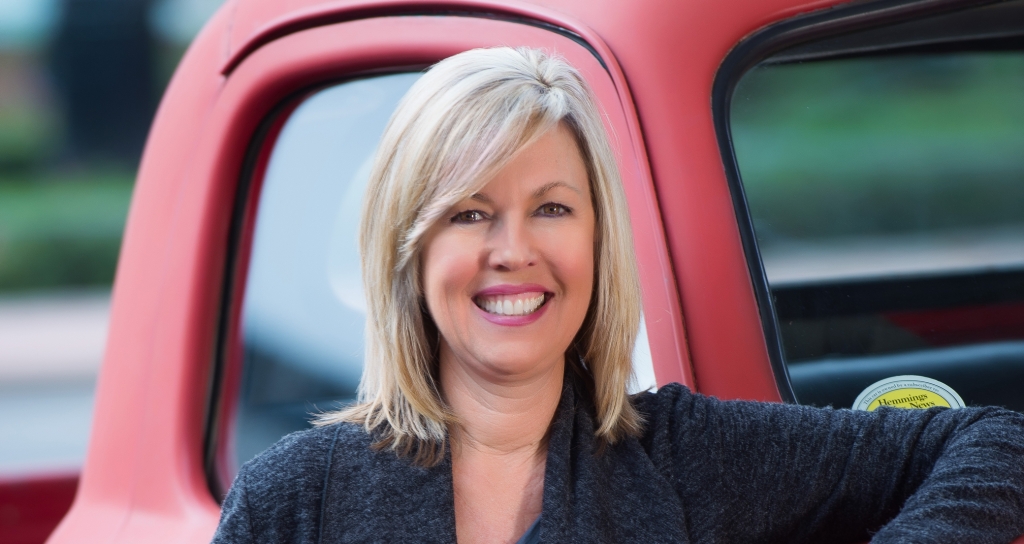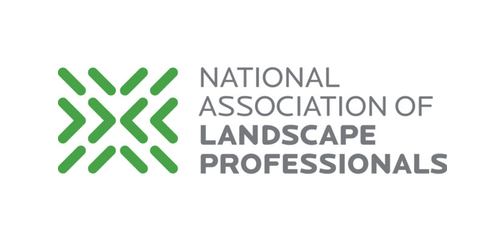Working Alongside Architects and Designers:
A Q&A with Plantscapers’ designer, Susi Tomich.
Do you feel that architects and designers truly understand the benefits of designing with plants? Many do. Others haven’t got there yet. When I first started 16 years ago, there were very few architects and interior designers that specified plants. The green movement wasn’t part of their vocabulary. Architects concerned themselves with structures and were not specifying plants, especially with the minimalist movement. Modern and contemporary design was based on everything being very clean, almost empty spaces and considered best for better work productivity. But today we now know this to be the opposite due to organizations such as LEED (Leadership in Energy and Environmental Design) and the IWBI (International WELL Building Institute) making a shift in the way buildings are built. Green Plants for Green Buildings is prominent in showing how plants are part of constructing a healthy environment.
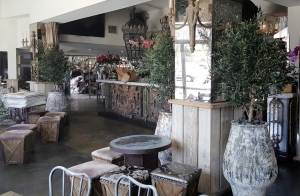
How have those organizations helped bring plants into the design? Both LEED and the WELL Building Standards are systems that earn points and credibility in the industry regarding sustainability and wellness incorporated in a building. It promotes green buildings that include indoor environmental quality. And based on the number of points, a project receives a rating such as LEED Gold or WELL Platinum. The majority of designers and architects are now well aware of the green movement and realize having a LEED or WELL certification, where plants are a big part of the process, is a plus in the industry. But not every architectural firm has a design department.
Which means? Some firms just design and build tilt-ups – industrial parks – where it’s just pouring the walls up and the firms are not involved in the interiors. The buildings are empty shells usually sold as warehouses. But now with the green movement that includes LEED and the WELL Building Standard, an interior design that meets certain values can bring environmental points and more selling power. That’s when an interior designer gets involved in specifying furniture, flooring, finishes and plants for the inside space.
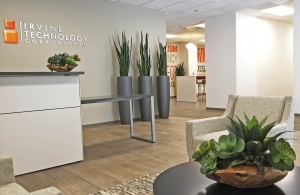
When is the right time for including plants in a design? Right from the start. Including plants at the design level has many advantages. First, built-in planters can be specified by the architects from the very beginning; and interior designers can leave space for the plants when specifying the furniture. It also is brings plants into the building’s budget and not as an after thought. Watch those HGTV design shows and you’ll see. They blow their entire budget on building and then have no money left over for furniture or plants. By incorporating plants into the budget from the very beginning assures they’ll be part of the interior design from the start.
Are plants placed in an environment solely for well-being? No, not necessarily. Spacing is part of interior design and plants can keep the flow of the surroundings. Plants can also be used as an art piece whether in a container or on the wall. But its true, plants’ greatest benefits are from the well being people receive from having them in their environment.
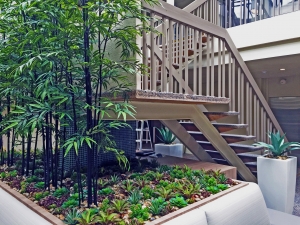
We have had a huge success this past year with the growing awareness in the community of the benefits of plants, especially indoors. Working alongside architects and designers has given us the opportunity to complement their amazing work by designing spaces with built in planters, free standing plants and living walls.
Indoor plants have made a huge impact on our clients’ projects. It proves becoming part of the project in the early stages of designing brings a collaboration between both our team and the design team to ensure our clients get a magnificent, full bodied interior design. What a win-win situation for everyone! An example of this awesome teamwork is a project we recently finished at a health care facility in south Orange County (picture right).
Is this part of utilizing biophilia? Yes. Biophilia is the big word these days and means we have an undeniable connection with nature that works positively on all our senses. They relax us, make us feel good. Plants soften the space around us. The whole feel of greenery in a room, even if they are replicas – not real plants – changes our mindset for the better. Health care centers and hospitals were one of the first too understand these benefits and use living walls and planters next to patients’ areas to aid in the healing process.
How is understanding plants critical to designing with them? Understanding plants and their lighting requirements is essential to designing with them. A client gives me an idea, a look they want and then it is up to us to specify the proper plant. And plants are a lot like produce, available only during certain seasons. We have to understand what plants are available and if they meet the lighting specifications of the space. Here, we work with our suppliers and vendors to meet their needs. Sometimes we have to specify additional lighting for a space. Living walls are so hot right now and a lot of people want them. But the lighting needs to be very bright and specific.
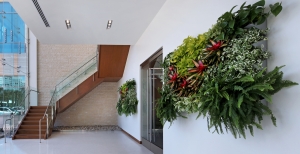
What do you mean specific? Lighting is very important for living walls because the plants are closer together so light needs to get deeper into the foliage. We can address this issue when plants are specified at the very beginning of the design, making it another good reason to include plants from the start of the project. So placing living walls in the newly designed spaces from the beginning can readily include skylights for added light to the room. Many architects reserve large walls in areas just for art that makes a perfect place for a living wall, but would need additional lighting to make it happen. Working alongside architects and designers assures the best possible environment is created for the plants.

